What is Customer-Centric?
The way we do business is changing fast. Today’s customers are empowered, knowledgeable, and won’t stand for sub-par service. What’s more, ecommerce options are seemingly infinite. When a customer doesn’t like a product or service, they’ll happily take their business elsewhere.
However, this need not spell disaster for your business. You might just have to start doing things a bit differently to keep your customers sticking around. To survive in today’s competitive commerce ecosystem, customer retention is key.
Many of today’s successful businesses are striving ahead with a customer-centric approach. We’re talking about the likes of Amazon, Deloitte, LinkedIn and Zappos.
In this article, we’re going to talk all about the customer-centric approach. Many of us think we have it, but in reality, most of us have only grazed the surface of this important business strategy. But don’t worry, we’re going to tell you all about it – along with some actionable steps you can take to become more customer-centric today, and for good.
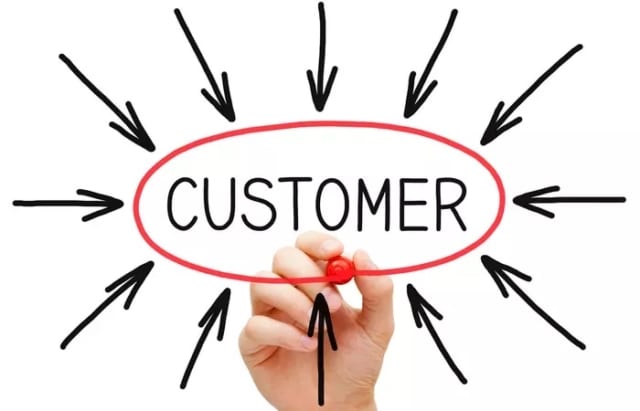
How to define customer-centric
A customer-centric strategy is a business term that does what it says on the tin. In its purest form, customer (or client) centricity is the act of putting your customers first. I.e., at the centre of everything you do.
But here’s the thing. For your business to be truly customer-centric, ‘putting your customers first’ has to be more than mere lip service.
Customer-centric organisations place their clients at the very core of their business plans. The idea is to guarantee long-lasting relationships based on quality customer experiences.
After all, customers are the lifeblood that keeps a business in business.
But despite this rationale, it’s not actually that easy. As business owners, we often invest the majority of our time and energy into our products.
This isn’t wrong, per se, but it’s not a customer-centric approach.
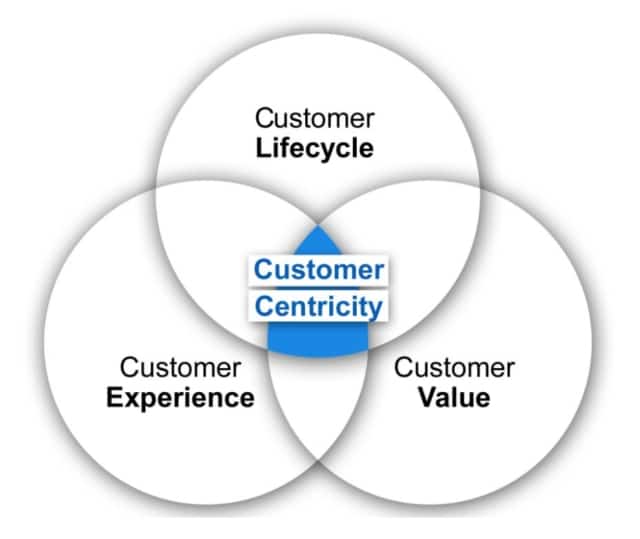
Hear us out.
When you make the shift to customer-centric business, you’ll find yourself with an inordinate amount of data. This is your gold-dust.
This data will tell you exactly what your customers are doing. What do they like? What do they dislike? What products are popular? How are they navigating your platforms?
With all this data, you’re primed to improve your products and customer experiences as a result. So, when we say focus on the customer, not the product, we’re not telling you to sell rubbish.
Not at all.
Rather, by focussing on the customer first, you’ll have the data to support better business decisions – better products, better UX, better promotions, better everything.
Sounds good, right?
In fact, 83% of companies that prioritise customer happiness also experience revenue growth.
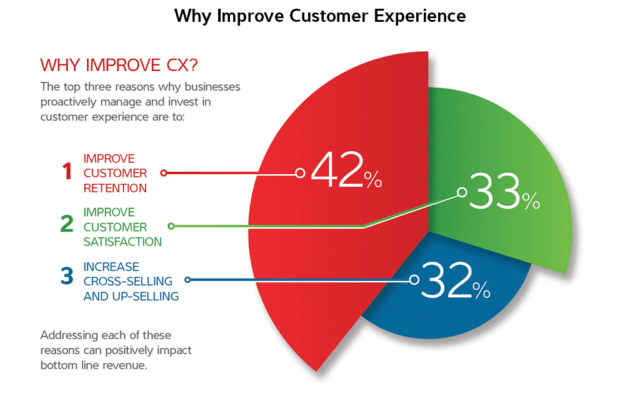
What Does it Mean to be Customer-Centric?
So, what does it actually mean to be customer-centric, in practice? Good question.
It means thinking about your customers first in every decision-making situation.
As a customer-centric business, you don’t just care about having lots of short-term customers, you care about keeping them and you do this by thinking like them.
Just being preoccupied with an abstract notion of your customer base is not enough. You need to get to know your customers and give them exactly what they want.
That means carrying out plenty of market research and testing (A/B testing, for example) in order to:
- Think like the customer
- Deliver exactly what your customer needs
- Place customers at the heart of company culture
- Offer a positive customer experience
Now, no one said this was going to be a walk in the park. Aligning your entire company culture to focus on the customer is a big job. But it’s definitely worth it.
The numbers don’t lie. Customer-centric companies are 60% more profitable than their non-customer-centric counterparts.
In just a moment we’re going to let you into our customer-centric secrets to help you plan, deliver, and measure a company-wide customer-centric culture.
But first, let’s talk about the benefits.
Benefits of Becoming Customer-Centric
When a company becomes customer-centric they are likely to notice some changes. Positive ones at that. It seems simple really. Happy customers mean happy outcomes. Let’s take a look at some of the benefits that accompany a customer-centric business model.
Growth and scalability
To become customer-centric you’ll have to start collecting lots of data. Customer insights, performance data, you name it. You might even have your own designated Customer Relationship Management (CRM) system. Now listen up. These insights present an opportunity for serious growth. Look for emerging trends and act accordingly with new products and services that meet your customers’ needs head-on.
Negatives become positives
When you adopt a customer-centric approach, negatives become positives. What do we mean? That you’ll see complaints in a new light. Negative feedback no longer spells annoyance or disaster. Instead, it becomes an opportunity to do better by your customers and improve services. You’ll start to see customer feedback as your ticket to success and customer retention.
Competitive-edge
You’re putting your customer first, giving them exactly what they need, listening to their feedback, offering better products and services. Guess what? That means your customers are going to love you. It also means that your competitor’s customers are going to love you, too. Soon you’ll be enjoying an increased market share and a bump-up in your sales as a result.
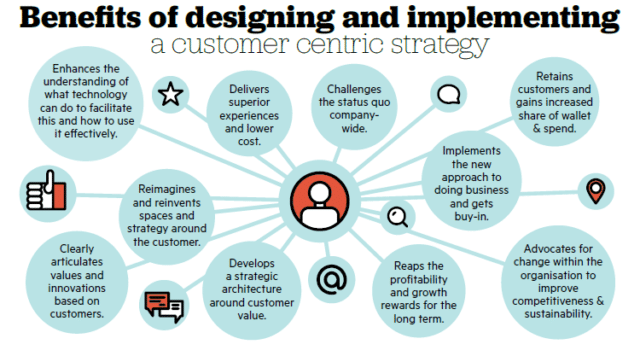
The Risks of Ignoring Customer-Centricity
We’re dealing with a simple concept here, but sometimes the simplest things are the most important. And this is one of those instances.
The way business works has changed in recent years. Customers have the power to make or break your business.
Customer expectations are at an all-time high. With the luxury of choice, our consumers are free to take their business elsewhere if they choose to.
And many do. 73% of consumers now say that a good customer experience is key to their brand loyalty.
With this in mind, it’s clear that prioritising customer loyalty with a customer-centric service is more important than ever before.
Why Customer Loyalty Matters
Customer loyalty isn’t just a business buzzword. It directly impacts your bottom line.
As retailers today we are at the mercy of our customers. With ecommerce booming like never before, customers have the luxury of choice – so much choice.
Today’s consumers want seamless omnichannel experiences (from first click to point of sale), and personalised interactions at every point – whether by email, bot, or social media.
If your services aren’t up to scratch, no bother, they’ll just find your product or service somewhere else more to their liking.
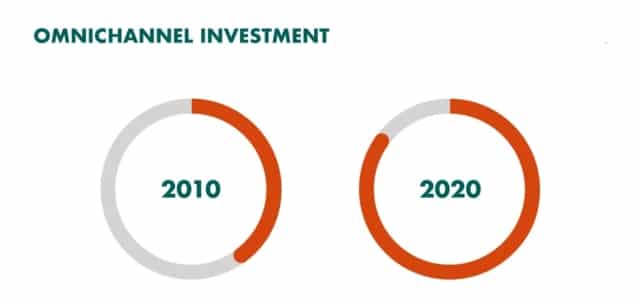
Even the smallest glitch in your customer’s journey could be enough to drive them away.
That said, customer loyalty is a crucial performance indicator when it comes to sales, too. Increasing your loyal customer base means increasing sales. It’s that simple.
Today’s customers want more than just products. They want to invest in shared values, quality customer care, streamlined experiences, and well-priced -and delivered on time- purchases.
These are the things that drive customer satisfaction and, ultimately, customer loyalty.
And to achieve these things, a customer-centric approach is key.
We’re not alone in saying this. Did you know that 65% of a company’s business comes from it’s existing customers, not new customers? Already 58% of companies are pursuing personalisation strategies for customer retention.
When we think of it like this, it’s hard to deny the importance of customer-centricity.
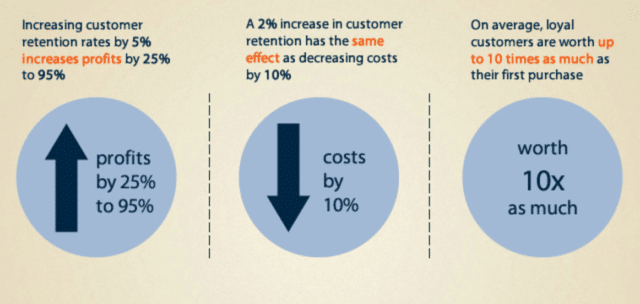
Ways to Measure the Success of a Customer-Centric Company
But how can we know if our own businesses are truly customer-centric?
Well, we’ll need some actionable ways to measure our success.
Key to this is customer intelligence; and no, I’m not talking about rolling out IQ testing to all our customers. Customer intelligence is all about gathering information about customer experiences. Information that you can then mobilise to improve your services in a targeted way.
You’ll want to find out exactly what motivates your customers’ needs, behaviours, and motivations.
But how?
Traditional market research has seen better days. In the digital age, these methods are too slow, too expensive, and lack the necessary precision to be viable.
Marketers need to mobilise precision, real-time, agile customer data insights. And to achieve this you’ll need a CRM or customer intelligence platform that’s up to the job.
These software solutions give us insight into what our customers need, want, and how they are interacting with our business platforms at critical touchpoints day-to-day, with essential customer metrics such as:
-
Churn rate
The number of customers who abandon a product or service. Keeping a close eye on your churn rate, and making the necessary changes, will help you increase customer retention.
-
Net promoter score (NPS)
A Net promoter score measures customer experience and predicts your business growth accordingly. NPS differentiates between Promoters (loyal customers like to make referrals), Passives (satisfied but not loyal), and Detractors (unhappy customers likely to leave bad reviews).
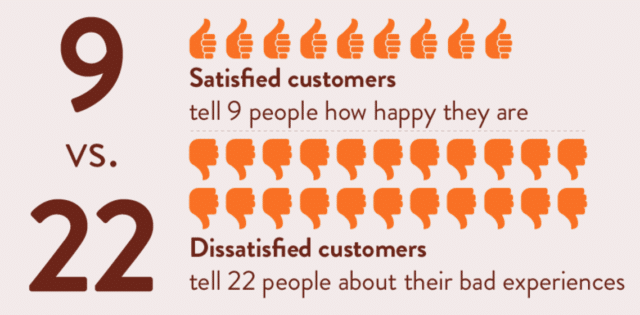
-
Customer lifetime value (CLV)
Customer lifetime value measures the amount of revenue a customer generates for your business from their first purchase to their last. It helps businesses better understand how to keep customers coming back.
Tips for Becoming a Customer-Centric Organisation
We’ve kept you waiting long enough. But it was for good reason. Before starting your own customer-centric journey, it’s essential to understand why you are doing it. You could call it the main ingredient. But now it’s time to offer up our tips and tricks and let you know, in practical terms, how to become a customer-centric organisation.
Becoming customer-centric is not an overnight decision. This ethos must permeate your entire company or organisation to succeed. Especially for larger organisations, it will take a lot of communication, time, and effort to get your entire company on board.
But let’s focus on some actionable steps.
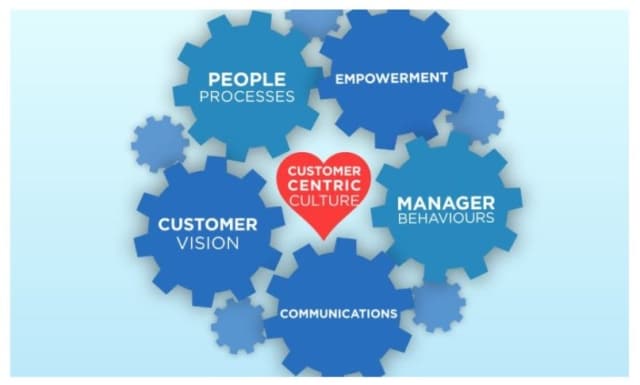
Here are four things you can do to become more customer-centric.
1. Become passionate about your customer
We’ve said it before and we’ll say it again. Customer-centric business starts with an attitude shift. Become passionate about each and every one of your consumers as individual customers, and generate this passion company-wide. Refrain from profit-focused thinking, and remember that the real drivers of profit are happy customers.
2. Prioritise community building
Treat your customers like a community of valued individuals. How? Be there for them. Make sure there’s always someone on the other end of the line to answer their questions. Customers want to feel valued and indispensable. So talk to them, listen to them, and act on their feedback. This is what will keep them coming back time and again.
3. Makeover your business culture
It’s not good deciding to become customer-centric, but telling nobody about it. This isn’t a personal spiritual journey you’re going on. To be successful, customer-centric business needs to be a company-wide cultural shift – not limited to closed silos. That means implementing customer-centricity as company policy for senior staff, stakeholders, and employees alike.
4. Start driving with data
You’re going to want to shift to an insight-driven approach. All your decisions should now be backed up by precision metrics and real-time insights. These will make up the central pillar of your new strategy. Without understanding your customer, there’s no way to be customer-centric. If you’re not already using a designated CRM system, now’s the time.
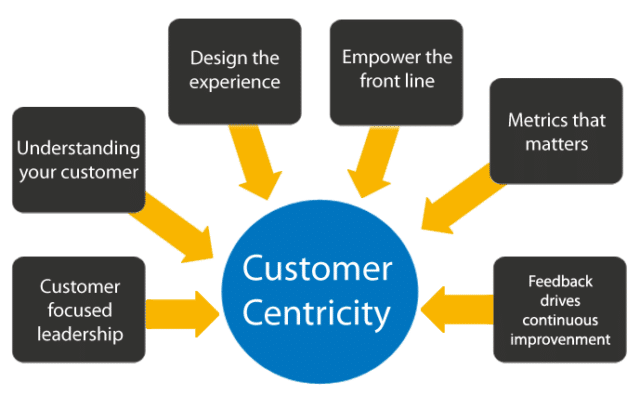
Be Customer-Centric for Success
Today’s customers are savvy, and they have every right to be. They’re not going to stick around for sub-par service. The key to retaining valuable customers in the digital age is customer-centricity through and through.
That means thinking like the customer, listening to what they have to say, and making targeted changes to improve their customer journey. And what better way to do that than going directly to the source, by making it easy for customers to share their feedback and get help anytime, anywhere.
Engage Digital is our digital customer service solution, that helps you achieve just this. Find out how you can put customer support into action and your data to work, today.
Originally published May 19, 2021

